Red Nose Pit Bull Heeler Mix Blue Eyes
This dog breed goes by many nicknames – the Pit Heeler, Bull Heeler, Blue Pit Cattle Terrier, Red Pit Cattle Terrier, Blue Terrier, Red Terrier, Bull Pit Heeler, and Queensland Pit.
Whichever name you choose to call this canine, but we're sure that you wouldn't want to miss out on this hybrid.
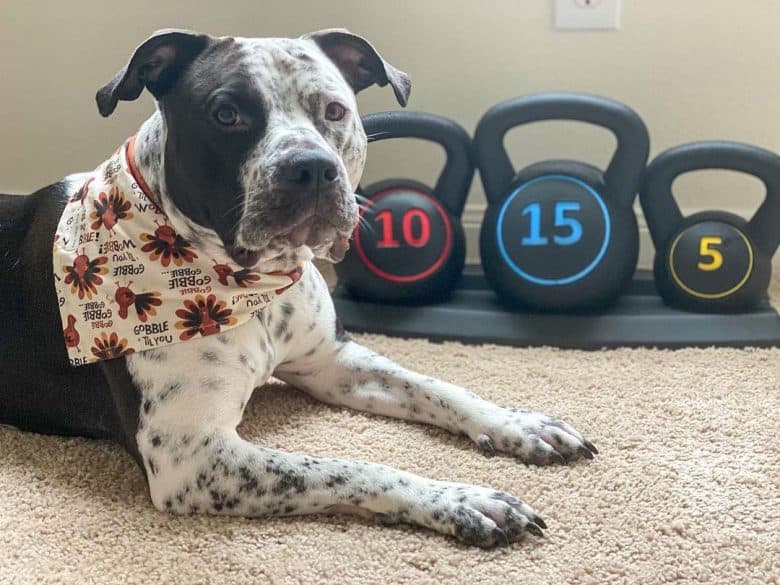
Blue Heeler Pitbull mixes are designer dogs that are affectionate despite having an intimidating look. Are they dangerous, though? Should you get one as a pet for your little ones?
Keep reading and find out if this crossbreed is right for you.
Where did the Blue Heeler Pitbull Mix originate?
The goal for creating this breed is to develop a doggo that could handle Australia's remote, rough, and tumble landscapes. So from herding dogs , wild dingoes , and cattle dogs, the Pit Heeler was born.
Other than that, there's not a lot of documentation about the history of this relatively new breed.
Still, ranchers adored the breed's desirable traits and brought them to America.
Were you trying to look for this designer dog in famous kennel clubs? Many don't recognize this breed, but the DRA or Dog Registry of America, Inc. does.
It's a good thing that we can learn more about hybrids by getting to know more about their popular parents. Let's start with Pitties.
American Pit Bull Terrier (APBT)
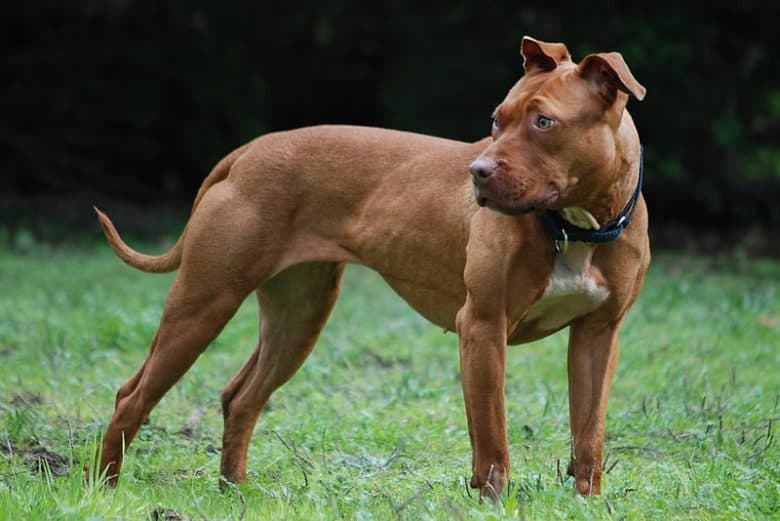
Also known as Pitty or Piitie, the American Pit Bull Terrier is a muscular and tough dog that's famous for its gory background involving blood sports like dog fighting, as well as bear and bull-baiting.
People back then took advantage of their strength and turned them into aggressive dogs, when in fact, they're sweet furry companions with big hearts.
From the ring, they got employed as farm dogs, and eventually, they became pets. They're even tagged as nanny dogs due to their gentleness toward children.
You may know this pup for its smiling face, stocky build, and short legs. They can stand up to 21 inches (53 cm) tall and weigh as heavy as 85 pounds (38 kg).
But just because they're inherently good-natured, it doesn't mean that they can't be dangerous. You wouldn't want to provoke a hardy pooch with a 235 PSI bite force. Oh yes! They can use that to protect their family and themselves.
Australian Cattle Dog (AKA Blue Heeler)
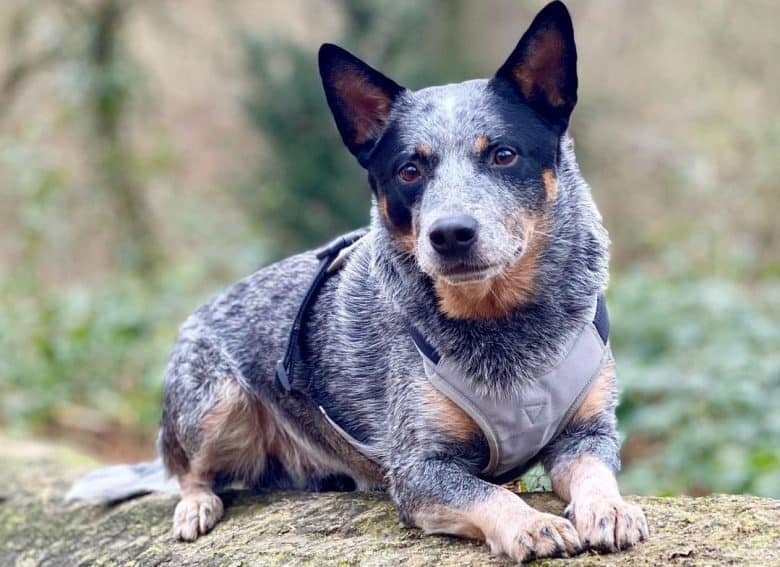
Australian Cattle Dogs are working dogs primarily used for herding cattle. They're commonly called Blue Heelers, but did you know that there are also Red Heelers?
But those nicknames were given to them because of the way they herd, which is by nipping the heels.
These hardy canines have a work ethic that can withstand long distances and harsh weather conditions.
Anyone who owns the breed will probably agree that they're active, intelligent, and protective pups that any dog lover would appreciate.
They have a muscular yet compact body that's covered with a water-resistant double coat.
Blue Heelers have a height between 17 and 20 inches (43 to 51 cm), and they can weigh anywhere from 30 to 50 pounds (14 to 23 kg).
Appearance: How does a Pit Heeler look?
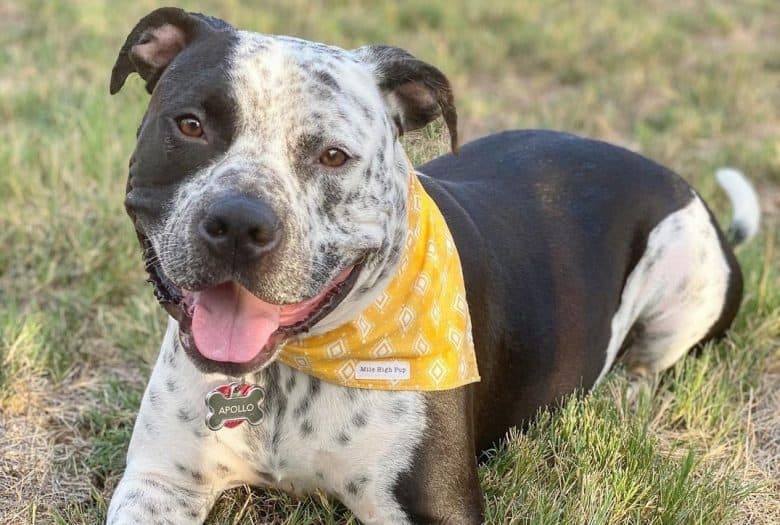
The Pit Heeler has a robust and brawny body that's longer than it is tall. It has a thick, muscular neck and a head that's rounded – similar to their Pitbull ancestor.
The head is broad between the cheeks with powerful jaws that meet in a scissors bite.
There's a slight curve between the ears with a definite stop. Its slightly pointed ears, which are sometimes cropped, stand erect when alert.
Its medium-sized, oval-shaped eyes are brown, and its nose can either be black, brown, or blue.
Like the Blue Heeler, this mixed breed has a strong back and deep, broad, muscular chest with broad hindquarters and round feet with short toes.
Some Pit Heelers may have shorter loins or a narrowed torso towards the tail, like the Pitbull. Their seats are somewhat curved, taper, and thin towards the end.
Owners never dock the bottoms of their Pit Heelers. Because of this, Pit Heelers can hold their tails at a moderately low level.
Size: How big will a Pitbull and a Blue Heeler mix get?
Most Blue Heeler Pitbull mix puppies reach their full-grown size by 12 to 18 months of age. They can measure between 17 to 24 inches tall (43 to 60 cm) and weigh between 30 and 60 pounds (13 and 27 kg).
Males are a bit taller and heavier than females.
Considering their size and activity level, they're not suitable for apartment living.
What type of coat do Pit Heelers have?
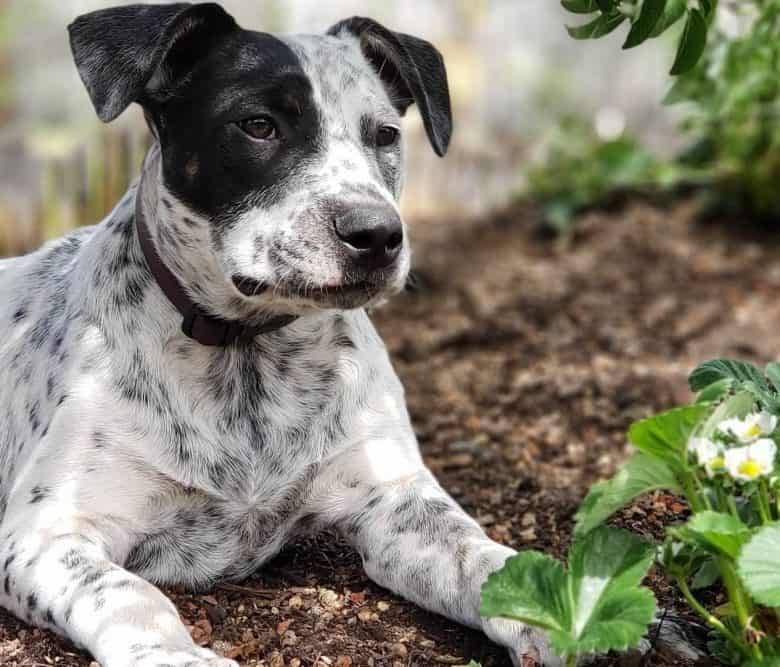
The Pit Heeler's coat is short, wavy, and dense. It comes in various base colors with greasy, striped, spotted, stained, or blue mottled markings. These shades include:
- White
- Grey
- Brown
- Blue
- Red
- Brindle
- Fawn
- Sable
Because their coat is so thick, you need to keep Pit Heelers cool under warm weather conditions.
Temperament: Do they make good family dogs?
Pit Heelers are not purebred dogs, and they can inherit any of their Blue Heeler and Pitbull Terrier ancestors' characteristics.
But generally speaking, the Pit Heeler's sweet, loving, and protective nature gives it the reputation of being a loyal family dog.
They're brilliant and need mental stimulation as part of their daily routine.
Some dogs may be more loyal and protective, while others are more friendly and playful. Some may be more aloof and suspicious of strangers and possibly even aggressive without proper socialization.
They tend to nip and bite by nature, so we don't recommend them for households with young children.
They're intelligent, obedient dogs who are eager to please their owners.
And while they don't bark a lot, they have moderate to high prey drive, so you should monitor them when around pets or small animals. They can get along well with other dogs and cats if raised alongside them.
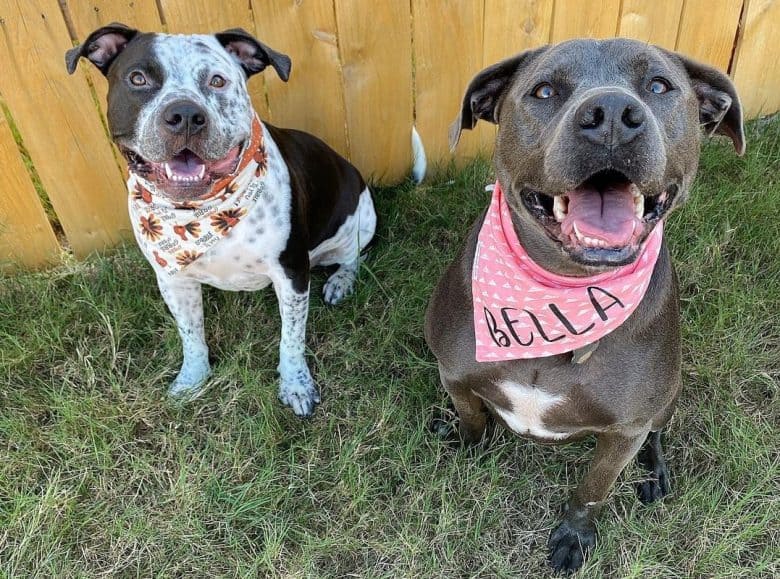
Pit Heelers will enjoy various activities, including hiking, running, agility training, and swimming. They're not the type of dog who does well if you leave them alone, as they can become bored, lonely, and restless.
Is a Blue Heeler Pitbull mix dog dangerous?
While their Pitbull ancestor has a reputation of being aggressive and dangerous, they have stable temperaments in reality. So much so that their friendliness is similar to the famous Golden Retriever.
As mentioned before, they can get along well with other cats and dogs they accept as part of their pack. But their prey drive may not make them a good match for a household with small animals such as hamsters.
Raising a Pit Heeler alongside other pets could help ease their separation anxiety, as these dogs don't enjoy being alone for long periods.
Because Pit Heelers are naturally obedient and eager to please, making them reasonably easy to train.
However, they're strong-willed and would need an owner with a firm hand during training. Owners should keep in mind that they don't respond well to aggression.
They need positive reinforcement instead and are better off with experienced dog owners.
Are you curious about how you can train your Pit Heeler? Check out this video:
Are Pitbull-Blue Heeler mixes high-maintenance dogs?
Pit Heelers are NOT high-maintenance dogs. Because of their thick coats, Pit Heelers don't do well in warm climates.
They do better in neutral to cool weather conditions. How else can you make your Pittie-Heeler cross a happy and healthy doggo?
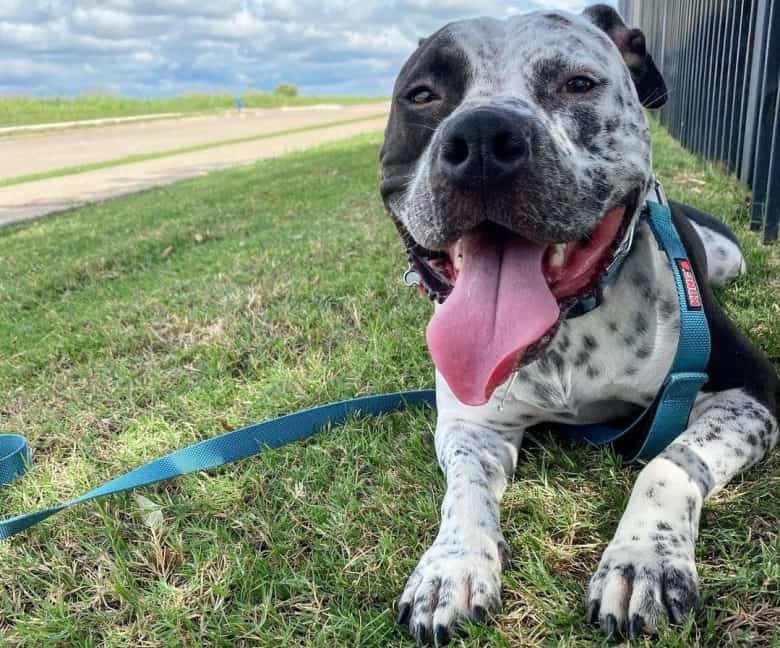
Exercising Your Blue Heeler Pitbull mix
Like their Pitbull and Blue Heeler parent breeds, Pit Heelers are energetic dogs with high energy levels and require plenty of exercise to match – about 45 to 60 minutes a day.
As intelligent breeds, they need not only physical stimulation but mental stimulation, as well.
So besides the usual neighborhood stroll or doggy park visits, teach your dog different tricks. Take it up a notch by letting him join canine sports!
Grooming: Do Blue Heeler Pitbull mix dogs shed?
While this designer pooch is not hypoallergenic, it has a low shedding coat that needs minimal grooming.
Brushing its fur once a week and an occasional bath would do the job. Unless, of course, your dog's starting to smell or have had a particularly messy outdoor play session!
For other hygiene tasks, your pet's nails are best clipped every 2 to 3 months if he doesn't wear them down naturally.
Clean his teeth at least 2 to 3 times a week, but daily is ideal. Wipe down his ears every week to make sure they're clean and dry and avoid ear infections and mites.
What to feed a Blue Heeler and Pitbull mix?
Like many other dogs, the Pit Heeler requires a high fat and animal protein diet to complement their muscular stature and active, high-energy lifestyle. On average, they need 2.5 cups of high-quality dog food.
Regardless of what type and brand you go for, make sure you're feeding your pet based on his age, weight, metabolism, and health.
Their diet should be packed with vitamins, minerals, chondroitin, and glucose to ensure good musculoskeletal health. Pitbull Blue Heeler mix puppies need a minimum of 22% protein and 8% fat with three meals a day.
Adult Pit Heelers need a minimum of 18% protein and 5% fat incorporated into their diet. They also need three meals a day, but you could feed them a reduced number of two meals a day if they are not active, working dogs.
Health Problems Your Pit Heeler May Have
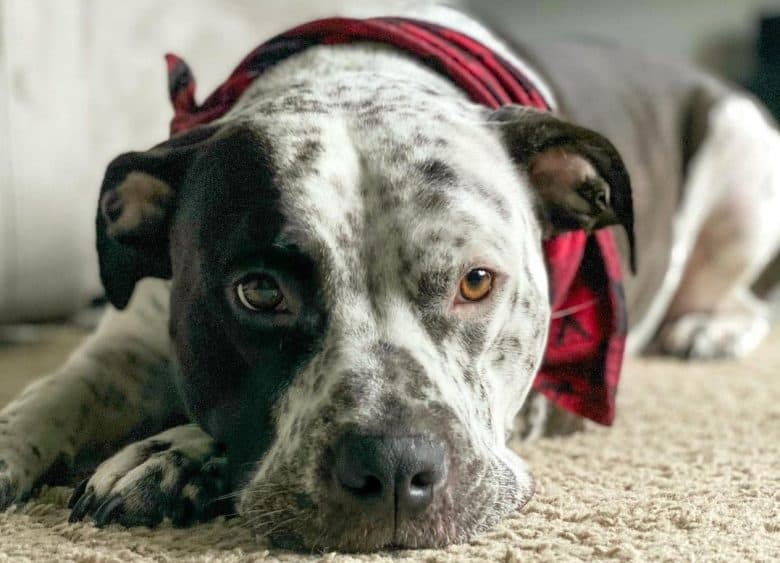
The Blue Heeler Pitbull mix is a generally healthy dog, but several potential health concerns may affect it at some point in its life. Hip dysplasia is one of the common health problems that can affect your Pit Heeler.
Other health issues this breed may face include:
- Progressive Retinal Atrophy (PRA)
- Skin problems and complaints
- Congenital heart defects
- Congenital Hereditary Sensorineural Deafness (CHSD)
It's best if your dog gets a regular health check-up to stay up-to-date on their medical conditions. These should include x-rays, radiographs, physical examinations, and electroretinograms.
That way, your fur baby can enjoy a lifespan of 12 to 15 years or more!
How much does a Blue Heeler Pitbull mix puppy cost?

If you want to welcome a Pit Heeler to your family, you can expect to pay anywhere between $800 to $1200 for a new puppy. But the price will depend on the dog's lineage and parental attributes.
However, this cost excludes medical expenses, food, training, toys and accessories, and more. So before you commit to buying a Pit Heeler puppy, make sure you're well-prepared to take full responsibility.
Blue Heeler Pitbull mix breeders & rescues
As of the moment, no breeders or kennels are offering a Blue Heeler-Pitbull cross for sale.
In case you find one, though, ensure that it's a reputable breeder by doing your research and asking friends, breed clubs, or local veterinarians for referrals and reviews for where to find Blue Heeler Pitbull mix puppies for sale.
You can find more tips on finding and working with responsible breeders here.
But you have an option to adopt. Rescue organizations for Australian Cattle Dogs & Pitbulls have purebreds and mixes who are up for adoption. They may have a Pittie & Heeler mix or other mixed breed dogs that you might like.
Check out these websites:
- Australian Cattle Dog Rescue (Garden City, NY)
- Texas Cattle Dog Rescue (Fort Worth, TX)
- The Love Pit Rescue (Dallas, TX)
- Adopt a Pit Rescue (Germantown, OH)
Is a Blue Heeler Pit mix right for me?
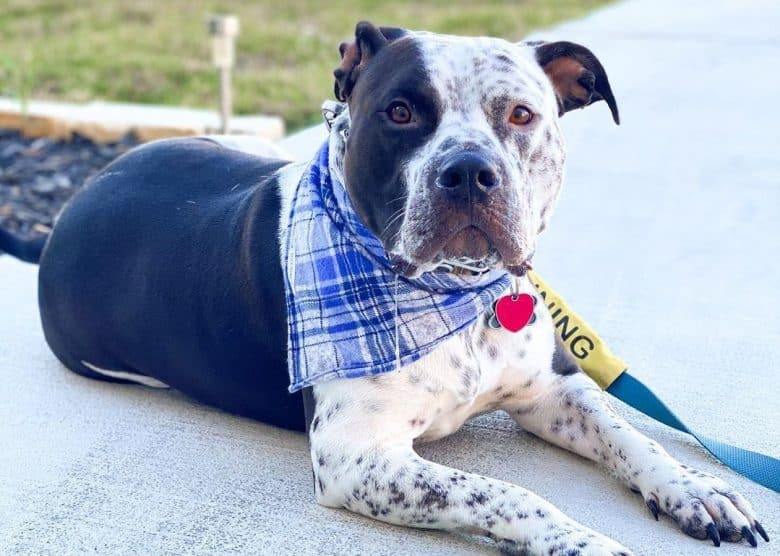
The Pit Heeler is a sweet, protective dog that is extremely loyal to its loved ones. They're obedient, energetic, and strong-willed and NOT recommended for first-time dog owners or families with young children.
They have low to moderate maintenance needs when grooming but expect high exercise to make up. They will reward you with their love and affection tenfold.
Like their parent breeds, they're working dogs who need mental and physical stimulation to live a happy life.
And while they're not inherently aggressive, they still need proper training and socialization so that their protective nature doesn't get the best of them. This way, you will ensure that they get along well with people and other animals.
Ultimately, if you're willing to put in the work to be a proud owner of this designer dog breed, you can rest assured that you have found a new best friend. If you have any experience with this breed, feel free to share it with us!
Further reading: Other Blue Heeler & Pitbull mixes
- Labraheeler (Labrador and Blue Heeler mix)
- Border Heeler (Border Collie and Blue Heeler mix)
- Texas Heeler (Australian Shepherd and Blue Heeler mix)
- Labrabull (Labrador and Pitbull mix)
- Pitsky (Pitbull and Husky mix)
- German Pit (German Shepherd and Pitbull mix)
matthiesthandsoll.blogspot.com
Source: https://www.k9web.com/breeds/blue-heeler-pitbull-mix/
0 Response to "Red Nose Pit Bull Heeler Mix Blue Eyes"
Post a Comment